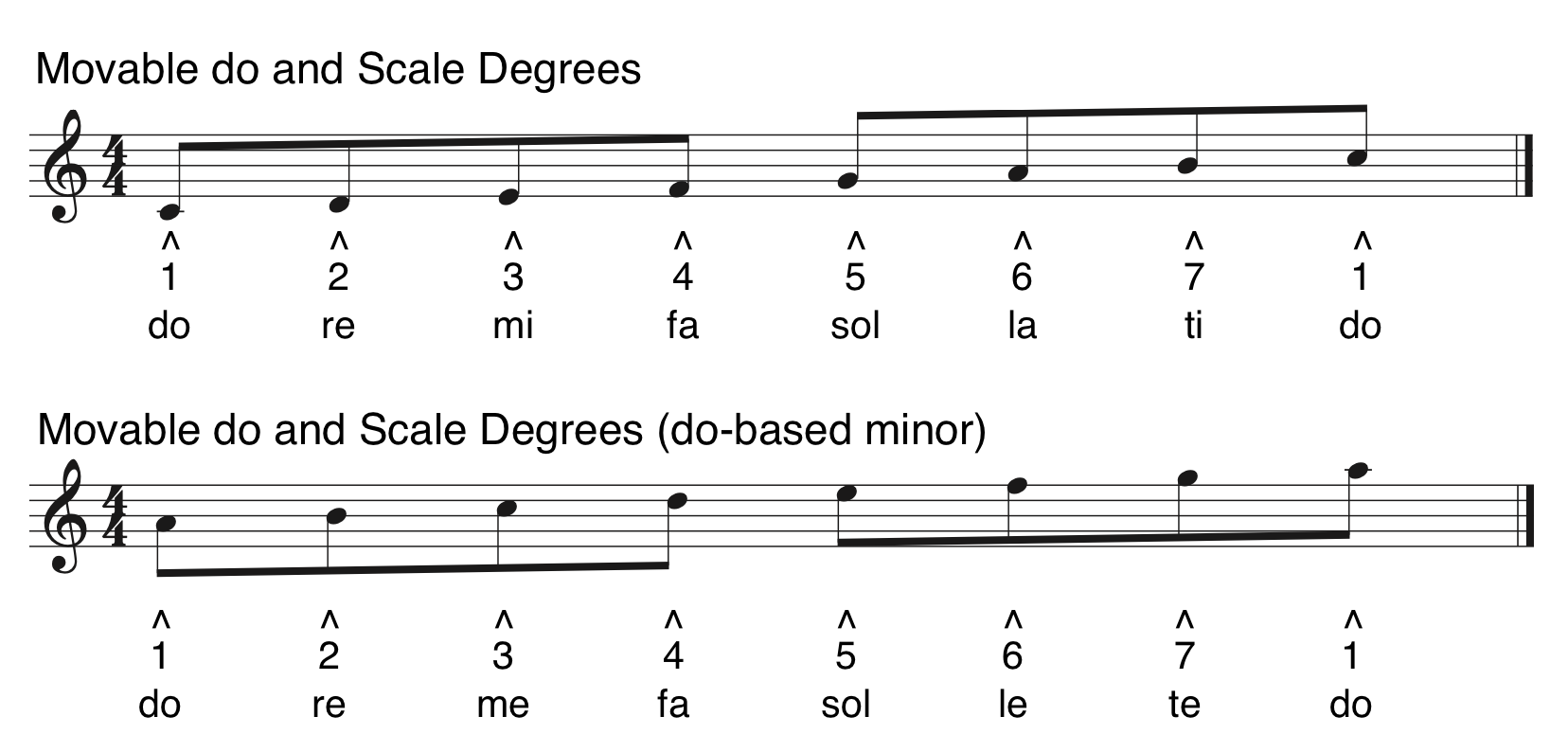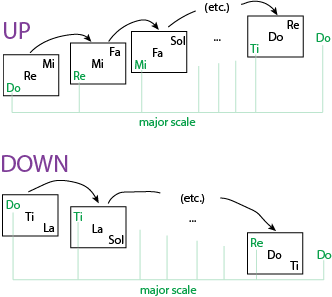Solfège
One time-tested model for internalizing a model of key is solfège, also known as “solfeggio” and “tonic sol-fa.” Solfège systems come in a number of different varieties. Since we prioritize scale degree identity and finding tonic in this text, we will focus on two systems that always associate the same basic syllable with the same scale degree: moveable-do (do-based minor) and scale degree numbers. Other common systems include moveable do (la-based minor) and fixed do. These systems each have their own advantages, and different instructors and musicians have different priorities.
Moveable-do (do-based minor) syllables and scale degree numbers are applied to the notes of C major and A minor scales below. Scale degree 7 may be pronounced “sev” to allow one syllable per note. Some instructors supplement the moveable-do system with hand signs.

Merely memorizing major and minor scales using the system of your choice is a great start, but not yet enough to make a solfège system as useful as it can be. Music is complicated, and the richer the models of solfège you internalize, the more powerful the system will be. In particular, it can be useful to practice the most common leaps within the scale.
To maximize the power of your internalized system of solfège, however, you should simply learn as much music on solfège as you can.
Activity: Sequentials
Goal: Learn a system of solfège, and get used to using it to model both steps and leaps.
Instructions:
- Sing a scale (major or minor) using your preferred system of solfège.
- Come up with a short pitch pattern (several examples are below). Sing it on each successive degree of the scale going up (see example image below).
- Figure out how that pitch pattern would sound if all the intervals remained the same generic size (second, third, etc.) but went the opposite direction (up vs. down). Sing the “upside-down” pattern on each successive degree of the scale going down (see example image below).
Possible models: do-re-mi (shown below), do-mi, do-ti-re-do, do-re-mi-fa, do-mi-fa-mi, etc.

Activity: Familiar songs on solfège
Goal: Enrich your solfège-based model of key by working with songs that do not simply repeat the same pattern.
Instructions: Choose a song that is very familiar to you. Work at first with relatively simple songs such as “Twinkle, Twinkle, Little Star” and “Row, Row, Row Your Boat”; as you get comfortable, move to more complicated songs. Sing each song on syllables appropriate to your preferred system of solfège.
Activity: Solfège and your repertoire
Goal: Make connections between solfège and your own music-making outside of class.
Instructions:
- Choose a piece of music for your primary instrument. Both working with familiar songs and figuring out songs you’ve never heard or played before are useful in different ways.
- Choose a melodic passage in the song that uses no, or relatively few, accidentals and is of manageable length (likely 4–8 measures). Make sure you know what key the passage is in (this may be different from the key of the song as a whole).
- Look over the passage, working out how to sing it in your preferred system of solfège.
- Sing through the passage using the appropriate solfège syllables.
- Sing/play through the passage as you normally would, without the solfège.
- Finally, sing/play through again, this time imagining the syllables.
Activity: Build your solfège vocabulary
Goal: Enrich your ability to apply your internalized model of solfège to different situations through a systematic approach.
Instructions: Work through excerpts of music from a sight-reading anthology. For each excerpt, look it over for 30–60 seconds, then sing it through on solfège. Since sight-singing anthologies are typically organized by topic and are designed to go from easy to hard, working through them systematically will build your ability to approach different kinds of situations with your understanding of solfège.

